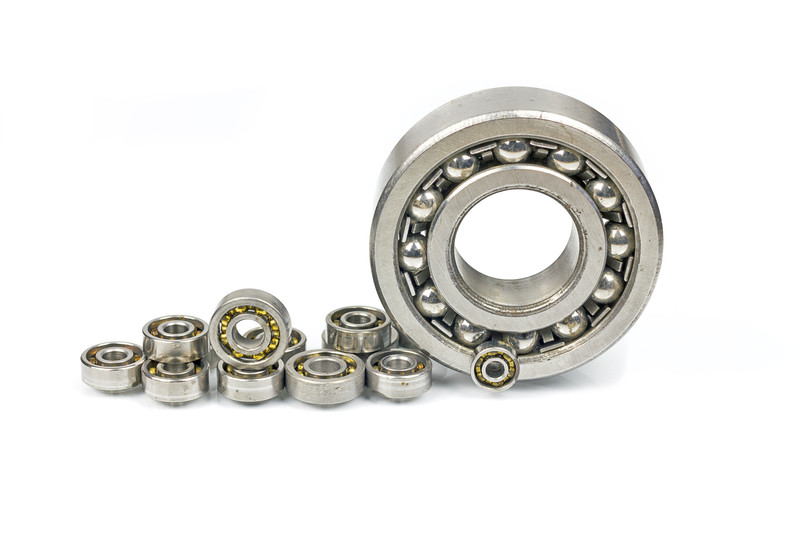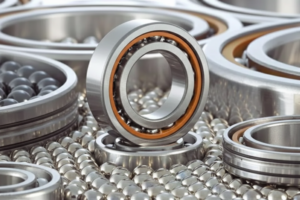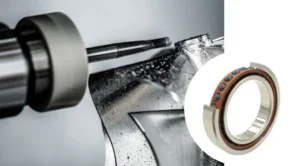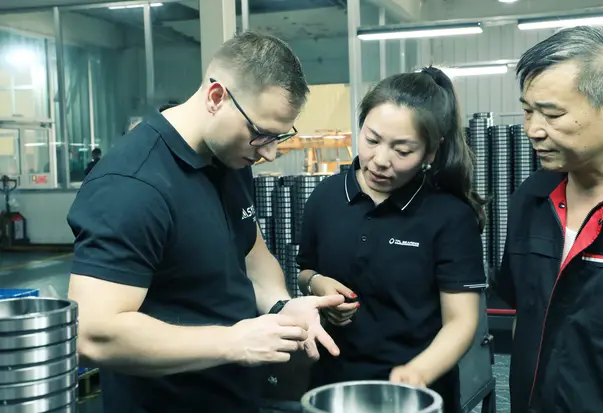Introduction
Inch-size miniature ball bearings are an essential part of many industries. But why are they so important? How are they different from other bearings?
In this guide, I’ll walk you through the applications and key features of inch-size miniature ball bearings, helping you understand why they are widely used in various fields. Let’s get started!
What Are Inch-Size Miniature Ball Bearings?
- Inch-Size Miniature Ball Bearings, as the name suggests, are small ball bearings measured in inches or fractional inches. They usually follow the ABEC (Annular Bearing Engineering Committee) precision standards. With their compact and precise design, they are great for applications that need low friction, high-speed performance, and minimal space.

- Differences between metric and inch-size miniature ball bearings
| Comparison | Inch-Size Miniature Ball Bearings | Metric Miniature Ball Bearings |
| Measurement Unit | Inches or fractional inches (e.g., 1/8″, 3/16″) | Millimeters (mm) |
| Common Regions | Mostly used in North America | Used worldwide, especially in Europe & Asia |
| Standards | ABEC (Annular Bearing Engineering Committee) | ISO (International Organization for Standardization), JIS (Japanese Industrial Standards) |
| Compatibility | Not interchangeable with metric bearings | Not interchangeable with inch bearings |
| Common Uses | Older machines, aerospace, medical devices, U.S.-made equipment | Modern machinery, precision instruments, consumer electronics, automotive industry |
Common Types of Miniature Ball Bearings
Miniature ball bearings can be classified from several perspectives, including structure, load type, material, and application. Here are the main classification methods:
- Classification by Number of Rows
- Single-Row Miniature Ball Bearings
- Double-Row Miniature Ball Bearings
- Classification by Inner and Outer Ring Structure
- Open Miniature Ball Bearings (No shields or seals)
- Shielded Miniature Ball Bearings (Typically labeled as “Z” or “ZZ”)
- Sealed Miniature Ball Bearings (Typically labeled as “RS” or “2RS”)
- Classification by Load Type
- Deep Groove Miniature Ball Bearings (Designed for radial loads)
- Angular Contact Miniature Ball Bearings (Can handle both radial and axial loads)
- Thrust Miniature Ball Bearings (Mainly designed for axial loads)
- Classification by Material
- Stainless Steel Miniature Ball Bearings (Highly corrosion-resistant)
- Ceramic Miniature Ball Bearings (Heat-resistant, corrosion-resistant, and low-friction)
- Hybrid Ceramic Miniature Ball Bearings (Ceramic balls with metal inner and outer rings)
- Classification by Metric or Inch-Sizes
- Metric Miniature Ball Bearings
- Inch-Series Miniature Ball Bearings
- Classification by Application
- High-Speed Miniature Ball Bearings (Used in precision instruments, motors, etc.)
- High-Temperature Miniature Ball Bearings (Suitable for extreme heat environments like aerospace and industrial furnaces)
- Low-Noise Miniature Ball Bearings (Ideal for medical devices, small motors, and noise-sensitive applications)
These classification methods can be combined according to practical application requirements.
Applications of Inch-Size Miniature Ball Bearings
- General Advantages
Introduce the main benefits of inch-size miniature ball bearings, such as:
- High Precision and Low Friction: They help devices run smoothly with little vibration.
- High Speed Performance: They work well in settings that need fast movement.
- Compact Design: Their small size and light weight make them easy to fit into various devices.
- Durability and Low Maintenance: Made with quality materials (like stainless steel or ceramic) to work well over a long time.
- North American Standard: Many devices (like medical tools and robots) are designed and made in North America, so using inch-size bearings keeps parts consistent.
- Applications in Different Fields
Medical and Dental Equipment
- Why They Are Used: High precision and low noise are very important for tools such as surgical devices and dental drills, ensuring patient safety and comfort.
- Key Benefits: They run smoothly, have low friction, and resist corrosion, which is good for frequent cleaning.

Robotics and Automation
- Why They Are Used: Robots and automated machines need very accurate motion control, fast response, and a compact design for efficient work.
- Key Benefits: They offer high precision, low friction, high speed, and a small size to meet the needs of precise movement.
Aerospace and Aviation
- Why They Are Used: Aircraft and space devices work in extreme environments. Durability and high precision are key for safe operation.
- Key Benefits: They can handle fast speeds and high temperatures while keeping noise low and performance steady.
Micro Motors and Industrial Equipment
- Why They Are Used: In small motors and industrial machines, space is limited, but efficient power transfer and long life are needed.
- Key Benefits: Their compact design, high precision, and durability make them a vital part of industrial equipment.
Although these fields differ, inch-size miniature ball bearings have become the common choice due to their high precision, low friction, high speed, durability, and easy maintenance.
How to Choose the Right Inch-Size Miniature Ball Bearings
When choosing inch-size miniature ball bearings, consider size, load, speed, and environment to find the best fit. Reliable brands ensure long-lasting performance.
- Size and Specifications
- Ensure the inner diameter, outer diameter, and width match your equipment’s requirements, such as 3/16″ × 3/8″ × 1/8″.
- Check the ABEC precision rating (e.g., ABEC-3, ABEC-5) to meet different accuracy needs.
- Load and Speed
- For high-speed applications (e.g., dental tools, micro motors): Use hybrid ceramic bearings (Si3N4 ceramic balls) for lower friction, higher speed, and longer lifespan.
- For heavy-load applications (e.g., industrial automation): Choose stainless steel bearings (440C or 52100 steel) for better durability and load capacity.
- Material and Sealing
- For high-temperature environments (e.g., aerospace, precision instruments): Use full ceramic bearings (ZrO2 or Si3N4), which can withstand temperatures over 500°C.
- For humid or corrosive conditions (e.g., medical devices, food processing): Use stainless steel bearings (440C) or coated bearings for corrosion resistance.
- For dusty or low-lubrication environments (e.g., automation equipment): Choose sealed bearings (RS or ZZ type) to prevent contamination.
- Recommended Brands
- Premium brands (high precision, long lifespan):
- NSK (Japan) – Great for medical and robotics applications.
- SKF (Sweden) – Suitable for industrial automation and aerospace.
- FAG (Germany) – Ideal for heavy machinery and automotive use.
- Cost-effective brands (good performance at a lower price):
- EZO (Japan) – Affordable miniature bearings for general use.
- NMB (Japan) – Best for micro motors and precision instruments.
- RBC (USA) – Widely used in aerospace applications.
Conclusion
Inch-Size Miniature Ball Bearings, thanks to their high precision, low friction, high speed, durability, and compact design, are widely used in medical devices, robotics, aerospace, and industrial equipment.
If you are still troubled by the inability to select the right bearing, our company has a very rich variety of bearing styles for you to choose from.





